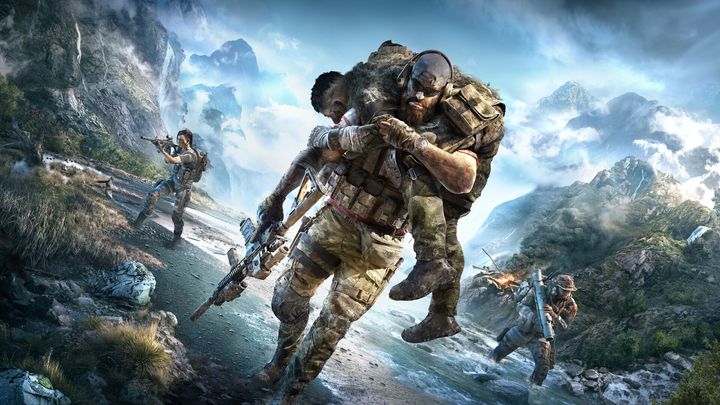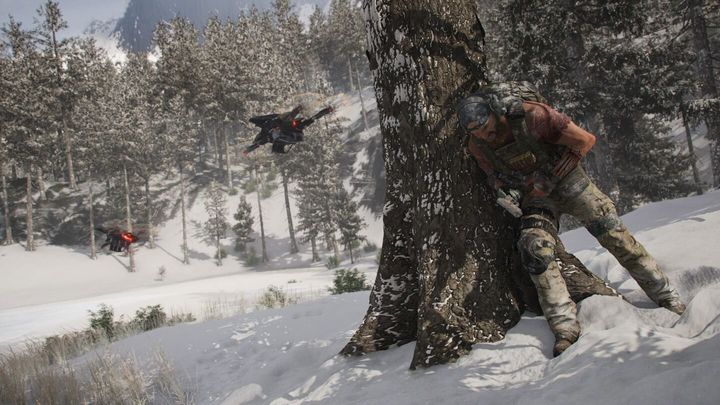
After open-world shooter Ghost Recon Wildlands racked up more than 15 million players since its launch on PS4, Xbox One, and PC in 2017, it was obvious that its publisher, Ubisoft would greenlight a sequel. Fast forward to 2019 and the company behind Assassin’s Creed and Splinter Cell revealed Ghost Recon Breakpoint for PS4, Xbox One, PC, and Google Stadia.
Despite being a direct sequel to Ghost Recon Wildlands in terms of story, a whole lot has changed in terms of gameplay and features having more in common with survival titles than shooters all while being a part of the Tom Clancy universe like the last game was. We spoke to Nouredine Abboud, Executive Producer on Ghost Recon Breakpoint at Ubisoft Paris to find out more.
For the latest news and more, follow HuffPost India on Twitter, Facebook, and subscribe to our newsletter.
When Ubisoft announced Ghost Recon Breakpoint earlier in the year, it stated that the game was an always-online affair, even in single-player though it never did explicitly state why this was the case. Naturally, we had to ask Abboud of the decision.
“By always being online, we guarantee the solidity of our shared progression,” he says. “By having only one system for solo, co-op, PvP [player versus player], it means we can put all our other energy into making sure that we have a single, coherent experience. When we started out, we wanted to make sure that no matter what you do in this game, it goes in the same direction, so it was an obvious choice.”
Though it appears to be all about creating a unified experience across all modes of play be it single-player, co-op, or multiplayer with Ubisoft ensuring progression can’t be manipulated by would be cheaters, it’s also the biggest challenge in developing Ghost Recon Breakpoint.
“The biggest technique, and also the biggest challenge, is how do we handle the shared progression,” he says. “The only way we can be coherent, and find meaning between all the different missions, all the different capabilities of developing your character and if you add the fact that there is also the PvP, is by having a single progression.”
This also meant that the story and character development in Ghost Recon Breakpoint had to make sense regardless how it was played, particularly with it offering side-quests in addition to mainline missions.
“No matter what you do, you are always developing the same character, it’s going to help you ‘fill in the dots’,” he explains. “A side mission that could seem a little bit off-rail from the general list of missions is going to make sense if it makes sense for you and for your character. It’s our job as game designers to play with what is actually done in the game, but also what the people can imagine and tell the story themselves emergent story-telling. That’s the technique. Yes, the linear cinematic story-driven missions are clearly managed by us. The things around this kind of leap of faith that people are going to do this work and logic element in their own head.”
The layers to Ghost Recon Breakpoint don’t end here. As we mentioned earlier, Ubisoft Paris has included survival elements such as eating and drinking. While most survival games like Rust and Metal Gear Survive punish players for not paying attention to these mechanics, the approach to these systems isn’t to penalise your playstyle in Ghost Recon Breakpoint, rather to augment it.
“Just take one example, if you don’t drink you don’t die. If you don’t drink, you don’t get the buff, but it’s very different from dying and having to start again,” he says. “With the story element, levels of difficulty and the not punishing approach, we can say that this is still a game about survival and you can then customise the way you want to play with it.”
Prodding further on the aspect of ‘levels of difficulty’ and how it ties into the survival elements of Ghost Recon Breakpoint and its plot, Abboud suggests that its meant to modify the experience by way of player choice.
“We have four levels of difficulty. If your level as a player is higher than the level of difficulty that you are playing, you are going to reduce what comes with the word ‘survival’,” he says. “What you’re not going to reduce is the general feeling, the storyline. Yes, you’re stranded on this island, you’re losing your teammates, you’re in a difficult situation. On the other hand, if you play on Extreme, the survival [element] will have lots of consequences. If you play it easy, a little bit less. So, we want to give the possibility for the player to choose. One thing to share, the words we have to use [during development] is ‘military survival’; we are not in the survival genre niche, where we will be forced to do things.”

The conversation shifts towards the overarching story for Ghost Recon Breakpoint. It heavily features Skell Tech, a fictional company that’s deeply rooted in other games in the Tom Clancy universe. Skell Tech’s drones are a part of Rainbow Six Siege, Ghost Recon Wildlands and Breakpoint, its optical camouflage was a cool feature that rendered players invisible in the campaign and multiplayer of Ghost Recon Future Soldier, and it played a huge part in powering the Splinter Cell’s Fourth Echelon, a clandestine outfit that includes series protagonist Sam Fisher.
With Ubisoft having a penchant for bringing its game worlds together what with Ghost Recon Wildlands featuring a Splinter Cell crossover, what could we expect with Breakpoint? Abboud left us with this.
“To be very open: what we did with Wildlands, mixing with Clancy elements, was very well received and people were very happy about what we did with Splinter Cell,” he says. “The quality of what we did was high, and we were able to leverage some of the key elements, including the main actors, from previous games.
We have already announced that we have the Terminator in Breakpoint. I won’t say more, but I can tell you that we probably have ideas about what we can do in the future, about other ‘elements’ coming to the game. I don’t want to detail at this stage, but it was successful in Wildlands. Why wouldn’t we be looking into this for Breakpoint?”
Ghost Recon Breakpoint is out on October 4 for PS4, Xbox One, and Google Stadia. There’s a beta for it as well from September 5 to September 9.